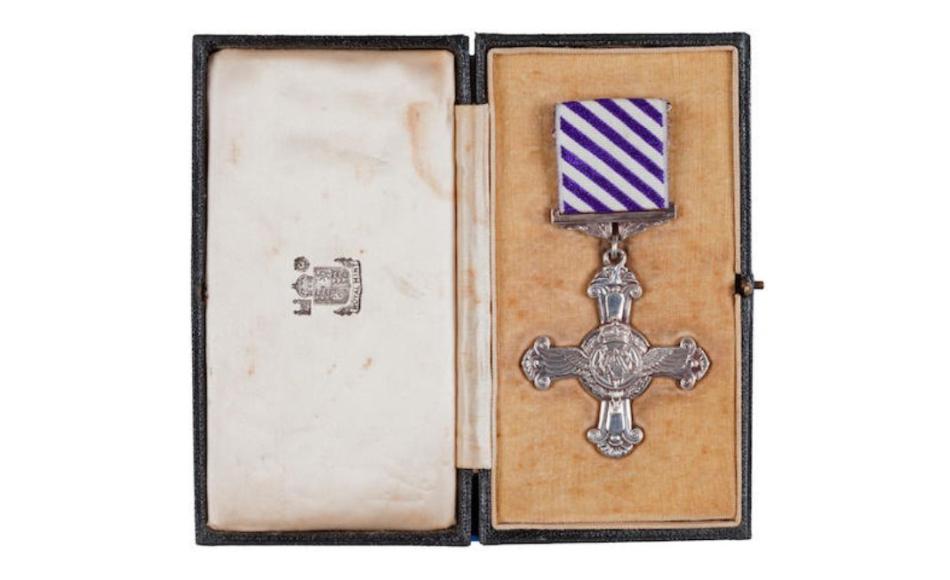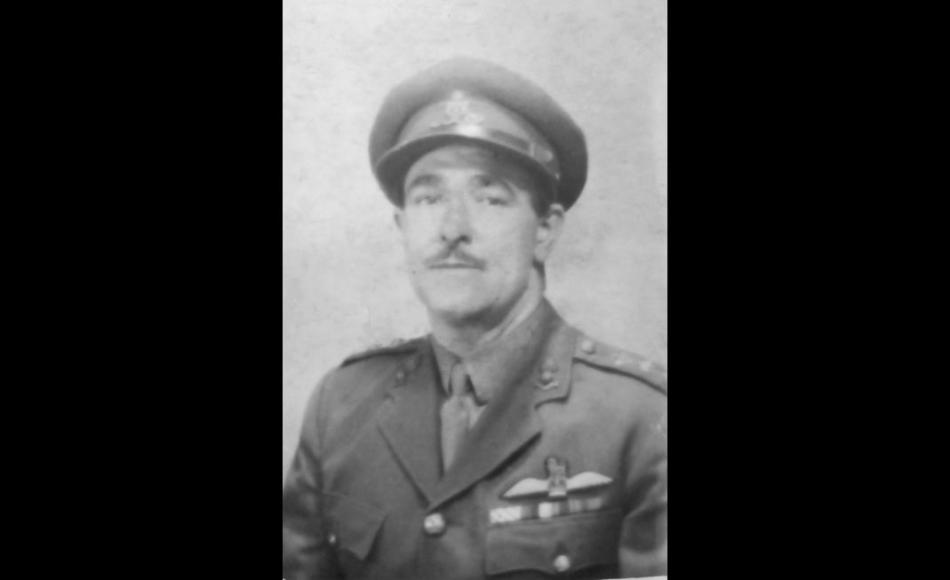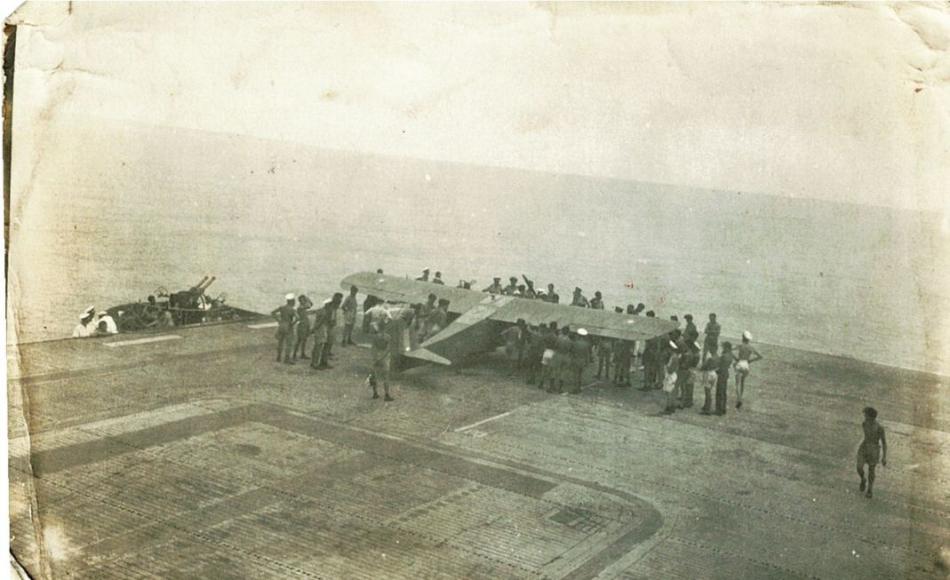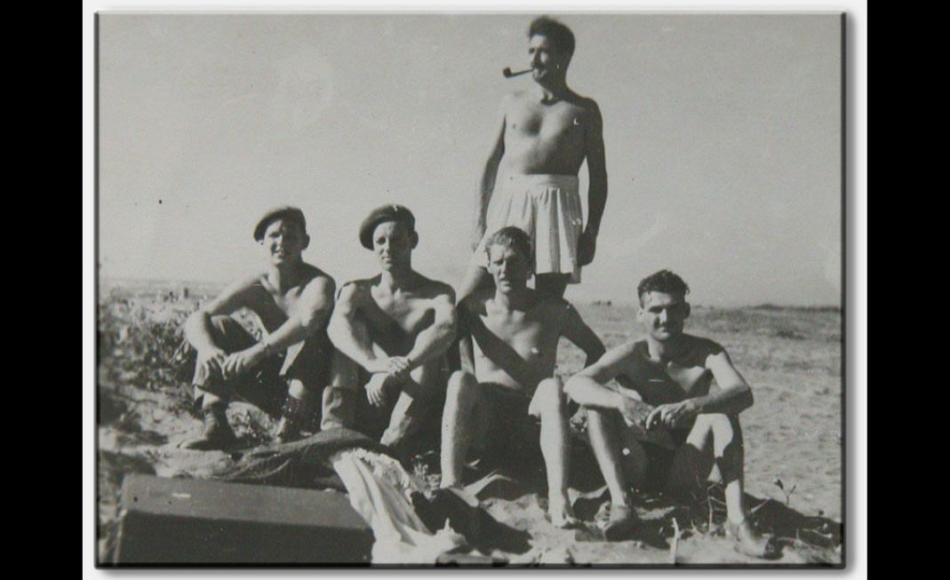Distinguished Flying Cross - Captain P J McLinden
This Distinguished Flying Cross (DFC) was awarded to Captain Patrick Joseph “Black Mac” McLinden (235883), a Royal Artillery pilot attached to 656 Air Observation Post (AOP) Squadron RAF. Serving in India and Burma from September 1943 to 1945, McLinden flew artillery spotting missions in support of General Slim’s 14th Army — later known as “The Forgotten Army.”
The Royal Artillery Museum’s medal collection also includes the DFC awarded to Captain Ian Kendal of 651 Squadron, recognising his service as an AOP pilot in Italy from November 1944 to May 1945. While the DFC was more commonly awarded to RAF personnel, these medals reflect the unique role Royal Artillery officers played as pilots in RAF AOP squadrons during the Second World War.
The DFC is awarded for “an act or acts of valour, courage or devotion to duty whilst flying on active operations against the enemy.” McLinden’s award, gazetted on 15 November 1945, recognised “gallant and distinguished services in Burma.”
AOP squadrons were unique formations, combining Royal Artillery officer pilots with a mix of RA and RAF other ranks as ground crew. Flying light Auster III and IV aircraft, AOP pilots directed artillery fire, performed reconnaissance, and occasionally assisted in naval bombardments. McLinden’s DFC is a rare recognition of the crucial and dangerous role these pilots played in jungle warfare.
McLinden’s medal group — generously donated to the Royal Artillery Museum — includes his DFC, the 1939–45 Star, Burma Star, Defence Medal, War Medal 1939–45 with Mentioned-in-Despatches Oak Leaf, along with his log books, maps, and original photographs. The DFC remains in its original box, accompanied by a note from Buckingham Palace, signed by King George VI:
“I greatly regret that I am unable to give you personally the award which you have so well earned. I now send it to you with my congratulations and my best wishes for your future happiness. George R.I.”
Thanks to the 656 Squadron Association and the Historic Army Aircraft Flight, we can trace McLinden’s actions in vivid detail through official records and personal accounts:
- April 1944 – Mayu Ridge: Gunner Tom Reynolds, 8th (Belfast) Heavy AA Regiment, recalled:
“The pilot was a big Scottish bloke with a black moustache (Captain McLinden). His job was to fly over the Mayu ridge, identify targets, and radio back to our command post. He told us that on one occasion about eighty Japs were killed lining up at their cookhouse. Another time, he pinpointed a barge on the river, and we got direct hits.” - 7–8 April 1944: C Flight diary noted:
“Captain ‘Black Mac’ McLinden carried out four counter-battery sorties... but the Japs did not fire when we were up, which is most annoying (for us).” - May 1944 – Brahmaputra River: During a monsoon withdrawal, three Austers attempted to land near a village. One hit a bank, another ended in floodwater — McLinden landed safely despite a downwind approach.
- December 1944: Back in action in the Arakan, McLinden flew reconnaissance and battery shoots from Cox’s Bazaar.
- Christmas Day 1944:
“Captain McLinden looked for three guns marked on captured Jap sketch, saw none, but he shot up trenches and did two registrations.” - January 1945 – Akyab Island: His aerial observation revealed the enemy had abandoned the island ahead of an Allied assault. Locals were seen waving white flags.
- 4 May 1945 – Rangoon: After deck landing practice on escort carriers, McLinden flew his Auster off HMS Stalker and landed at Mingaladon airfield. As he and three other pilots flew over the city, they spotted a message painted by POWs on the gaol roof: “Japs gone extract digit.” They entered Rangoon by rickshaw — ahead of the main Allied forces.
We are deeply grateful to the 656 Squadron Association and the Historic Army Aircraft Flight for their assistance in preserving Captain McLinden’s legacy and making these records available.
Read more on the 656 Squadron website.



